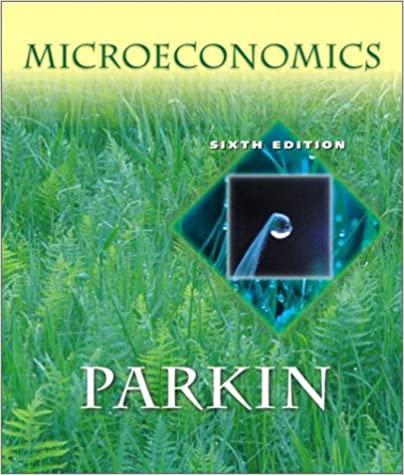Answered step by step
Verified Expert Solution
Question
1 Approved Answer
The executive team at Current Designs has gathered to evaluate the company's operations for the last month. One of the topics on the agenda is
| The executive team at Current Designs has gathered to evaluate the company's operations for the last month. | ||||||||||||
| One of the topics on the agenda is the special order from Huegel Hollow, which was presented in CD2. Recall that | ||||||||||||
| Current Designs had a special order to produce a batch of 20 kayaks for a client, and you were asked to determine | ||||||||||||
| the cost of the order and the cost per kayak. | ||||||||||||
| Mike Cichanowski asked the others if the special order caused any particular problems in the production process. | ||||||||||||
| Dave Thill, the production manager, made the following comments: "Since we wanted to complete this order quickly | ||||||||||||
| and make a good first impression on this new customer, we had some of our most experienced type I workers run the | ||||||||||||
| rotomold oven and do the trimming. They were very efficient and were able to determine that part of the manufacturing | ||||||||||||
| process even more quickly than the regular crew. However, the finishing on these kayaks required a different technique | ||||||||||||
| than what we usually use, so our type II workers took a little longer than usual for that part of the process." | ||||||||||||
| Deb Welch, who is in charge of the purchasing function, said, "We had to pay a little more for the polyethylene | ||||||||||||
| powder for this order because the customer wanted a color that we don't usually stock. We also ordered a little extra | ||||||||||||
| since we wanted to make sure that we had enough to allow us to calibrate the equipment. The calibration was a little | ||||||||||||
| tricky, and we used all of the powder that we had purchased. Since the number of kayaks in the order was fairly small, | ||||||||||||
| we were able to use some rope and other parts that were left over from last year's production in the finishing kits. | ||||||||||||
| We've seen a price increase for these components in the last year, so using the parts that we already had in inventory | ||||||||||||
| cut our costs for the finishing kits." | ||||||||||||
| Instructions | ||||||||||||
| (a) | Based on the comments above, predict whether each of the following variances will be favorable or unfavorable. | |||||||||||
| If you don't have enough information to make a prediction, use "NEI" to indicate "Not Enough Information." | ||||||||||||
| (1) Quantity variance for polyethylene powder. | ||||||||||||
| (2) Price variance for polyethylene powder. | ||||||||||||
| (3) Quantity variance for finishing kits. | ||||||||||||
| (4) Price variance for finishing kits | ||||||||||||
| (5) Quantity variance for type I workers. | ||||||||||||
| (6) Price variance for type I workers. | ||||||||||||
| (7) Quantity variance for type II workers. | ||||||||||||
| (8) Price variance for type II workers. | ||||||||||||
| (b) | Diane Buswell examined some of the accounting records and reported that Current Designs purchased 1,200 pounds | |||||||||||
| of powder for this order at a total cost of $2,040. Twenty (20) finishing kits were assembled at a total cost of $3,240. | ||||||||||||
| The payroll records showed that the type I employees worked 38 hours on this project at a total cost of $570. The | ||||||||||||
| type II finishing employees worked 65 hours at a total cost of $796.25. A total of 20 kayaks were produced for this | ||||||||||||
| order. | ||||||||||||
| The standards that had been developed for this model of kayak were used in CD2 and are reproduced here. For | ||||||||||||
| each kayak: | ||||||||||||
| 54 pounds of polyethylene powder at $1.50 per pound | ||||||||||||
| 1 finishing kit (rope, seat, hardware, etc.) at $170 | ||||||||||||
| 2 hours of type I labor from people who run the oven and trim the plastic at a standard wage rate of $15 per hour | ||||||||||||
| 3 hours of type II labor from people who attach the hatches and seat and other hardware at a standard wage rate | ||||||||||||
| of $12 per hour | ||||||||||||
| Calculate the eight variances that are listed in part (a) of this problem. | ||||||||||||
| NOTE: Enter a number in cells requesting a value; enter either a number or a formula in cells with a "?" . | ||||||||||||
| (a) | Based on the comments above, predict whether each of the following variances will be favorable or unfavorable. | |||||||||||
| If you don't have enough information to make a prediction, use "NEI" to indicate "Not Enough Information." | ||||||||||||
| (1) Quantity variance for polyethylene powder. | ||||||||||||
| (2) Price variance for polyethylene powder. | ||||||||||||
| (3) Quantity variance for finishing kits. | ||||||||||||
| (4) Price variance for finishing kits | ||||||||||||
| (5) Quantity variance for type I workers. | ||||||||||||
| (6) Price variance for type I workers. | ||||||||||||
| (7) Quantity variance for type II workers. | ||||||||||||
| (8) Price variance for type II workers. | ||||||||||||
| (b) | Calculate the eight variances that are listed in part (a) of this problem. | |||||||||||
Step by Step Solution
There are 3 Steps involved in it
Step: 1

Get Instant Access to Expert-Tailored Solutions
See step-by-step solutions with expert insights and AI powered tools for academic success
Step: 2

Step: 3

Ace Your Homework with AI
Get the answers you need in no time with our AI-driven, step-by-step assistance
Get Started


